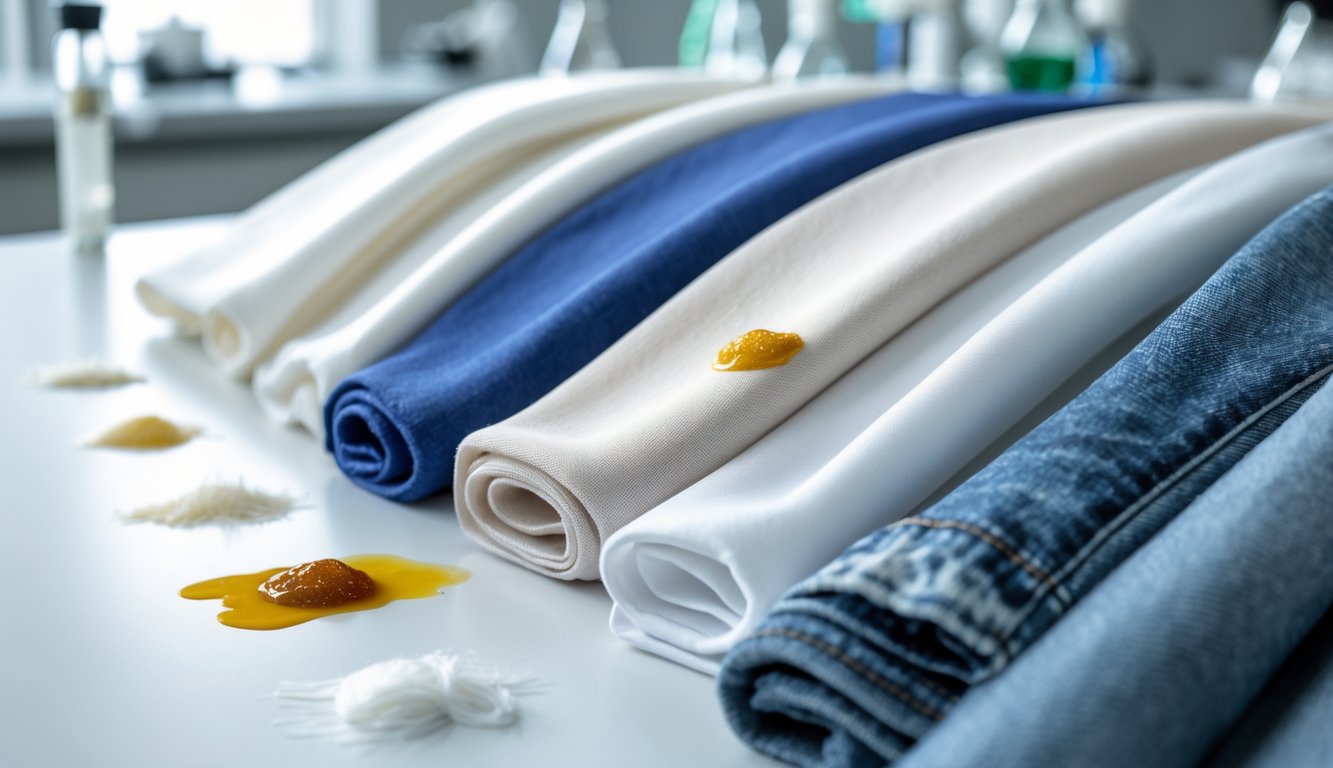
The Future of Stain-Resistant Materials
So, these “miracle” tablecloths keep popping up on my feed—supposedly invincible, right? Last Thanksgiving, cranberry sauce basically laughed at mine. Is anyone else not buying the hype? They keep saying performance textiles are the future, but half the time, I’m still scrubbing stains like it’s 1999. I did stumble on this polymer nanofilm thing that’s supposed to make shirts almost stain-proof. Imagine never buying detergent again. (Honestly, that sounds fake, but whatever.)
Here’s what gets me: nanotech labs are out here slapping invisible coatings on everything—leggings, suits, whatever—yet my “stain resistant” couch cover shrugs off wine but not, like, Cheeto dust. My friend (textile engineer, professional coffee spiller) says stain-release tech is maybe 70% real-world effective. Seventy. Not exactly a miracle, right?
I’m still adjusting to the fact that stain-resistant fabric doesn’t feel like those plasticky horrors from the early 2000s. The new stuff—polyester blended with cotton or whatever—feels weirdly soft. Supposedly, according to industry deep-dives, these fabrics do everything: resist wrinkles, kill germs, block UV rays. But the real question: can they handle pastrami juice? (Nobody answers that.)
Saw a chart in some trade mag—can’t find it now, naturally—where nano-coated fabric beat out old-school sprays by, like, 2–3x on red wine and ketchup. (Maybe. I think. Why didn’t I bookmark it?)
| Fabric Type | Old Tech Resistance | Nanofilm Tech Resistance |
|---|---|---|
| 100% Cotton | Low | Moderate |
| Polyester/Nylon Blends | Medium | High |
| Treated Synthetics | Moderate | Very High |
If stain-proof jeans ever exist, I’ll still buy bleach. Force of habit.
Frequently Asked Questions
Supposedly, everything is “easy-clean” and “chemical-free” now. Sure. My white jeans still get marinara stains if I so much as look at a tomato. Parents and cat owners—yeah, we know. The “science” behind half these fabric protectors? Feels like marketing with a side of wishful thinking. Still, a couple of the new tricks are worth knowing, if only for sounding smart at dinner.
What are the latest breakthroughs in creating stain-resistant fabrics?
Labs are obsessed with nano-coatings lately. Silicon dioxide sprays, “molecular shields”—it’s all very Star Trek until you spill coffee and realize, nope, napkins still exist. Polyester blends keep showing up in stain-resistant fabric innovations. Supposedly they’re weaving protection right into the yarn, which sounds cool, but ketchup does not care.
I bought a linen jumpsuit with “ultra-hydrophobic” magic and, yeah, berries still destroyed it. Engineers love their “test cycles,” but if you have kids, the lab never prepared you for real life.
Can you recommend any non-toxic alternatives to traditional fabric protectors?
I lose track of all the “non-toxic” sprays people push. Half smell like salad dressing, half stain the couch worse than juice. Plant-based stuff—soy, cellulose, beeswax—shows up everywhere in eco guides, but most need constant re-applying and sometimes make things feel weird. Does cornstarch actually protect a rug? I doubt it. Honestly, natural stain-resistant fabric like wool gives me more peace of mind than any spray I’ve tried.
How effective are PFAS-free products in preventing fabric stains?
I want to trust PFAS-free means safe, but, uh, water beads up, sure—grease, not so much. Companies love their “controlled spill” tests, but try real-life red wine speed and it’s a joke. Some guides say multi-fiber blends handle daily messes okay, but my favorite chair still looks like a crime scene.
What should I know about the safety of mainstream fabric protectors like Scotchgard?
That Scotchgard logo used to feel like a security blanket. Then I read up: regulatory changes, banned ingredients, the EPA side-eyeing old formulas (C8 era, yikes). New ones are probably safer, but who knows what happens after a decade in a couch? Chemists say perfluorinated chemicals stick around forever. As for real-world buildup? Good luck getting a straight answer from a press release.
A couple friends with chemical sensitivities said they got headaches after pro treatments; I never noticed, but I also forget to open windows. If you want more, skeptical textile experts have plenty to say.
Are there eco-friendly fabric protectors that actually work?
Nothing gets hyped like “eco” fabric sprays—except maybe compostable K-cups. Plant- and mineral-based finishes exist; one upholstery shop swore by a citrus blend, but olive oil just cut through it. The “best” eco brands? You have to reapply every time you breathe on the fabric.
Stain-resistant options with recycled polyester or natural blends are improving (see this guide), but “works” usually means “works if you never eat or sit down.” Toddlers don’t care about lab conditions. Neither do I.
Is there any evidence that Crypton fabric is safe for long-term household use?
Alright, so here’s the thing: I bought into the whole Crypton hype for my sofa (yeah, I know, I’m a sucker for a good pitch—antimicrobial! Moisture barrier! Basically indestructible, or so they say). But honestly, does anyone really know if this stuff is safe after, like, a decade? Sure, the company throws around third-party test results for VOCs, and they’ve got those Oeko-Tex and Greenguard Gold certifications—sounds legit, right? But I’m still squinting at all of it, wondering if anyone’s actually checked what happens after years of spilled coffee and mystery stains.
I talked to this upholstery guy once—he kind of just shrugged and said the “sealed” surface traps whatever soaks in. So, what, the smell just lives there forever? I haven’t found any real studies showing bad effects from having Crypton-covered furniture at home, but let’s be real: science is always playing catch-up with whatever I drag into my living room. And if I forget these nagging questions next time I’m eyeing another “miracle” ottoman, please, someone stop me.